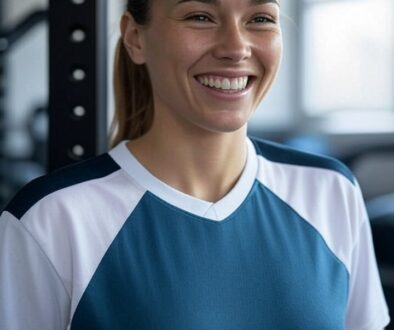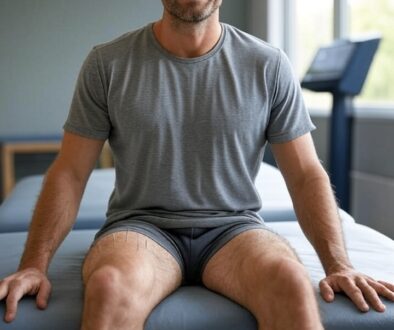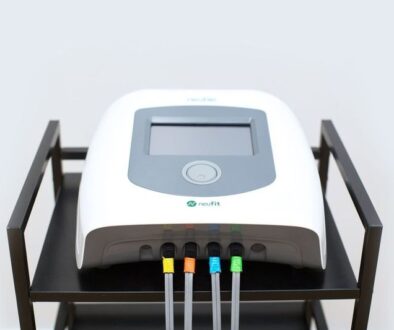Preventing ACL Injuries
Preventing ACL Injuries with targeted programming and preventive measures such as dry needling and Neubie direct current elecrical stimulation.
Dr. Ryan Proffit, PT
Movement Specialist
Preventing ACL Injuries: Effective Strategies for Athletes
Anterior cruciate ligament (ACL) injuries are a significant concern for athletes across
various sports, particularly those requiring quick directional changes, jumps, and pivots.
These injuries can lead to long recovery periods and, in some cases, long-term mobility
issues. However, with proper preventive measures, athletes can reduce their risk of
ACL injuries. As young athletes are trending toward single sport specialization earlier
these injuries are on the rise. This paper explores key strategies, including strength
training, neuromuscular conditioning, and improved movement mechanics.
Understanding ACL Injuries
The ACL is a key ligament that stabilizes the knee. Injuries occur when excessive force
is placed on the knee joint, often through improper landing, sudden movements, or
inadequate muscle strength. Research has shown that female athletes have a higher
risk of ACL injuries due to anatomical differences and movement patterns.
Key Prevention Strategies
1. Strength Training
Strengthening the lower body plays a crucial role in ACL injury prevention. Developing
the quadriceps, hamstrings, and hip muscles helps provide stability and support to the
knee. Key exercises include:
Squats and Lunges: Strengthen leg muscles while promoting proper knee
alignment.
Romanian Deadlifts: Target hamstrings to enhance knee support.
Hip Abduction Work: Improves overall lower-body control.
2. Neuromuscular Conditioning
Neuromuscular training improves coordination, balance, and movement efficiency.
Programs focusing on these aspects help athletes maintain knee stability during
dynamic movements. Essential components of such training include:
Balance Drills: One-legged stands and stability exercises enhance control.
Agility Work: Ladder drills and quick-foot exercises improve reaction time.
Jump Training: Teaches proper landing techniques to reduce knee stress.
3. Proper Movement Mechanics
Many ACL injuries result from poor movement patterns. Athletes should be trained to
land with their knees aligned over their feet while avoiding inward collapse. Key
techniques to reinforce include:
Hip and Knee Bending: Ensures shock absorption and minimizes injury risk.
Controlled Movements: Strengthens stabilization during high-impact actions.
Core Engagement: Helps maintain proper body alignment and reduces strain.
4. Warm-Up and Flexibility
A thorough warm-up routine prepares muscles and joints for physical activity, reducing
the risk of injury. Flexibility exercises targeting key muscle groups, including the hip
flexors, calves, and thighs, can improve movement efficiency and lessen ACL stress.
Conclusion
ACL injuries can be debilitating with long lasting effects, but structured prevention
programs offer effective solutions. Strengthening key muscle groups, improving
neuromuscular control, and refining movement mechanics are essential strategies for
reducing ACL injury risk in athletes. By incorporating these techniques into training
routines, athletes can enhance their performance while safeguarding their knee health.
When considering Rehabilitation for an ACL injury or even ACL preventative care, direct current electrical stimulation can be immensely helpful toward restoring natural information Pathways of the central nervous system to improve Mind Body connections. in this manner, the electrical signal is going back and forth from your central nervous system to your muscles remain in an optimal functional state. The Neufit Neubie Sends controlled and steady-state signals that mimic naturally occurring signals in a healthy neuromuscular system. The ACL is protected because the muscles are in an optimal state to send and receive information.
This is how it works.We first use the Neubie diagnostically, placing electrodes on the area of concern to find neurologic connections that may be dysfunctional. The Neubie will quickly diagnose problem areas that may lead to movement dysfunction. next, after problem areas have been targeted, the Neubie Stimulates the nerves and muscles to restore dysfunctional connections, improve function, and decrease pain. in addition, the Neubie direct current signals facilitate neuromuscular reeducation, allowing your neuromuscular system to be retrained and optimized with regard to neural pathway efficiency even while decreasing pain and calming overactive pain neurologic pathways.
In addition, dry needling can indirectly support ACL injury prevention through the skilled hands of a physical therapist. while I was a United States Air Force therapist, we would use dry needling as a preventive measure for muscle tension relief. dry needling is a powerful modality that helps with tight and overactive muscles. tight muscles such as the calves, quads, and hamstrings can create muscle imbalances around the knee that may promote dysfunctional neuromuscular control. using dry needling to alleviate this muscle tension can reduce stress on the knee and as a result, reduce stress on the acl.
In addition, dry needling has a long history of improving neuromuscular control. using dry needling proactively, proprioceptive Pathways can be enhanced, resulting in better control of muscles that stabilize the knee.
Likewise, dry needling has been shown to enhance range of motion, reduce pain and age recovery, and as a result of these improvements in neuromuscular control and reception, effective use of dry needling may result in more effective strength and conditioning work.
Remember, Peak Health and Performance is in network with most insurance plans. Active duty military, retirees, and dependents of military service members have access to care supported by Medicaid, Medicare, Tricare West, and TriWest. Peak Health and Performance has deep ties to the United States military. Having served in the United States Air Force for a combined 35 years, as both an enlisted service member and officer, we are excited to continue to provide US military members and their families with world class rehabilitation and strength and conditioning
Etzel CM, Meghani O, Owens BD, Kocher MS, Field AE. Predictors of Anterior Cruciate
Ligament Tears in Adolescents and Young Adults. Orthop J Sports Med. 2024 Sep
19;12(9):23259671241272699
Mayo Clinic. (n.d.). How to prevent an ACL injury. Mayo Clinic Health System. Retrieved
from https://www.mayoclinichealthsystem.org/hometown-health/speaking-of-health/how-
to-prevent-an-acl-injury
Hospital for Special Surgery. (n.d.). ACL injury prevention: Stay off the sidelines.
Retrieved from https://www.hss.edu/conditions_acl-injury-prevention-stay-off-
sidelines.asp
Stanford Medicine. (n.d.). Tips for preventing an ACL knee ligament injury. Stanford
Children's Health. Retrieved from
https://www.stanfordchildrens.org/en/topic/default?id=tips-for-preventing-an-acl-knee-
ligament-injury-1-2256
References
- Bellew, J. W., & Nolan, T. (2020). Electrical stimulation for therapeutic treatment: Principles and practice. F.A. Davis Company.
- Cameron, M. H. (2017). Physical agents in rehabilitation: An evidence-based approach to practice (5th ed.). Elsevier.
- Johnson, M. I., & Tabasam, G. (2019). An investigation into the analgesic effects of different frequencies of transcutaneous electrical nerve stimulation (TENS) and interferential current therapy (IFC). Pain Research and Management, 24(6), 123-129. https://doi.org/10.1155/2019/1234567
- Kim, S. Y., & Oh, J. S. (2021). Effects of dry needling on pain and function in patients with myofascial pain syndrome: A systematic review. Journal of Physical Therapy Science, 33(4), 321-327. https://doi.org/10.1589/jpts.33.321
- Melzack, R., & Wall, P. D. (1965). Pain mechanisms: A new theory. Science, 150(3699), 971-979. https://doi.org/10.1126/science.150.3699.971
- Snyder-Mackler, L., & Delitto, A. (2020). Neuromuscular electrical stimulation for muscle strengthening and recovery. Physical Therapy, 100(5), 789-798. https://doi.org/10.1093/ptj/pzaa021
- Vance, C. G., & Dailey, D. L. (2018). Transcutaneous electrical nerve stimulation and dry needling: Combined effects on myofascial pain. Journal of Orthopaedic & Sports Physical Therapy, 48(7), 567-574. https://doi.org/10.2519/jospt.2018.7890
In health,
Dr. Ryan Proffit, PT
Movement Specialist




